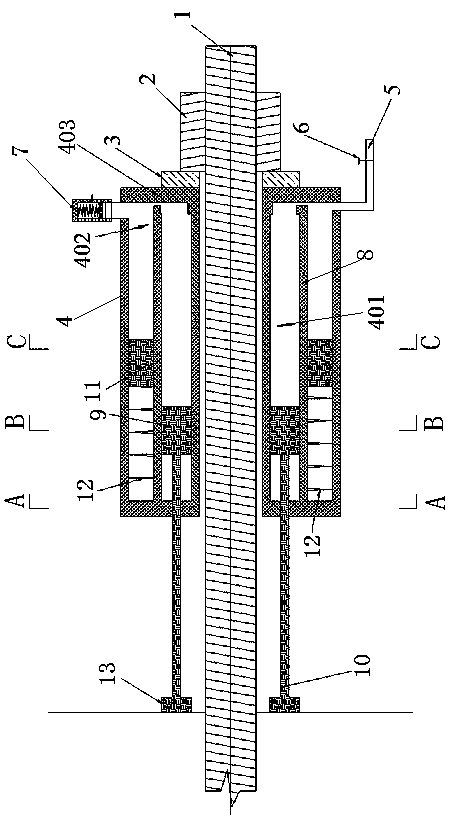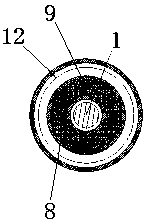Anti-seismic pressure-limiting anchor rod head
A bolt and anchor head technology, which is applied in the installation of bolts, mining equipment, earthwork drilling and mining, etc., can solve the problems of difficult quantitative analysis, non-reusable, non-reusable, etc., and achieves wide application range, convenient design and calculation and The effect of the analysis
- Summary
- Abstract
- Description
- Claims
- Application Information
AI Technical Summary
Problems solved by technology
Method used
Image
Examples
Embodiment Construction
[0029] The following will clearly and completely describe the technical solutions in the embodiments of the present invention with reference to the accompanying drawings in the embodiments of the present invention. Obviously, the described embodiments are only some, not all, embodiments of the present invention. Based on the embodiments of the present invention, all other embodiments obtained by persons of ordinary skill in the art without making creative efforts belong to the protection scope of the present invention.
[0030] Such as Figure 1-4 As shown, the embodiment of the present invention provides an anti-seismic pressure-limiting bolt anchor head, including a bolt 1, an annular hydraulic cylinder 4, a damping spring 12 and at least two piston rods 10; the annular hydraulic cylinder 4 is coaxially sleeved on the On the anchor rod 1, and the installation wall 403 of the annular hydraulic cylinder 4 is connected to the anchor rod 1; through the annular partition 8, the i...
PUM
 Login to View More
Login to View More Abstract
Description
Claims
Application Information
 Login to View More
Login to View More - R&D
- Intellectual Property
- Life Sciences
- Materials
- Tech Scout
- Unparalleled Data Quality
- Higher Quality Content
- 60% Fewer Hallucinations
Browse by: Latest US Patents, China's latest patents, Technical Efficacy Thesaurus, Application Domain, Technology Topic, Popular Technical Reports.
© 2025 PatSnap. All rights reserved.Legal|Privacy policy|Modern Slavery Act Transparency Statement|Sitemap|About US| Contact US: help@patsnap.com



